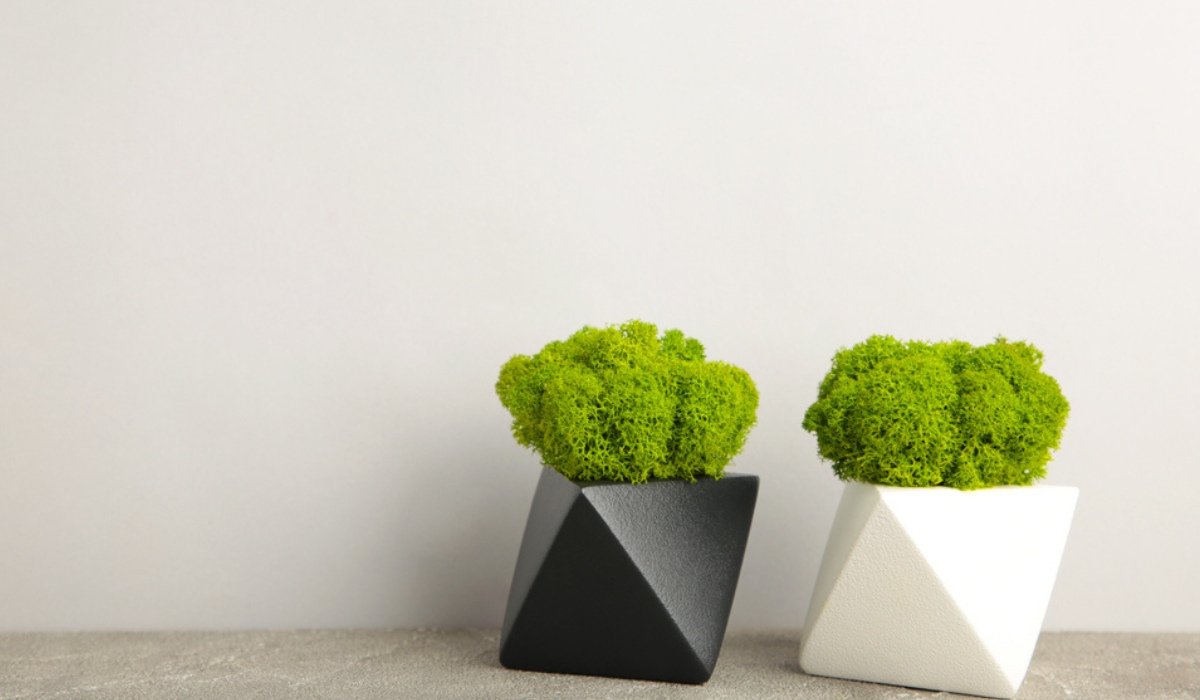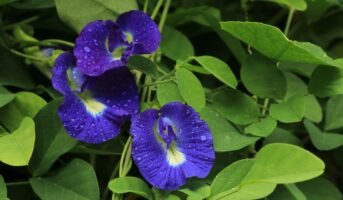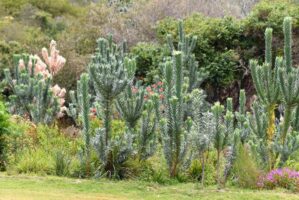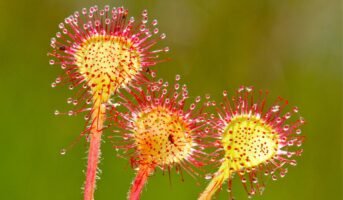Mosses are tiny, non-vascular, flowerless plants classified as part of the natural order Bryophyta. All around the world, mosses can be found in wet, shaded environments, except for saline water. The species that cover woodland and forest floors are the ones for which they are most known.
In ecology, mosses erode exposed substrates, liberating nutrients that later-emerging, more cultivated plants can utilise. They play a crucial role in the nitrogen and water economy of particular vegetation types, and they also help to minimise soil erosion by providing surface cover and absorbing water. Sphagnum species that produce peat are those with significant economic importance.

Source: Pinterest
More than 100 species have been found in fossils from the Paleogene and Neogene periods, dating back to the Permian Period (298.9 million to 251.9 million years ago) (66 million to 2.58 million years ago). The fossil mosses Muscites, Proto Sphagnum, Palaeohypnum, and others resemble contemporary taxa in terms of structure.
How to grow moss?
- Moisture: Moss needs a damp environment to grow, but it will not thrive in a swampy environment.
- Shadow: Given that moisture is more likely to stay put and evaporate slowly there, it makes sense that moss would choose to grow there. Often, soil with a pH of around 5.5 is more acidic than other soils, which moss also prefers. Even though moss may grow in almost any type of soil, most mosses favour compacted soil, especially compacted clay soil.
Moss plant’s life cycle
The alternation of generation occurs during moss’s life cycle. It appears as the haploid gametophyte and the diploid sporophyte alternate. The zygote is created when the haploid gametes from the male and female gametophytes combine to form the diploid sporophyte. Later, the diploid sporophyte’s haploid spores germinate to create the haploid gametophyte.

Source: Pinterest
Gametophyte
The male and female sex organs are formed at the terminals of the protonema and leafy stages of the gametophyte, respectively. The term “archegonia” refers to the female sex organs. It produces the female gamete or ovum and is shielded by leaves modified by perichaetium. The archegonia has a bottle-like appearance. Antheridia are the name for the male genitalia. They move through the water while fusing with the archegonium’s egg.
Sporophyte
From a diploid zygote, a diploid sporophyte emerges. A seta, a foot-long stalk, and an operculum-capped capsule make up a sporophyte. This sporophyte adheres to the gametophyte, which undergoes mitosis to divide. The tablet features peristomes resembling teeth to stop spores from slipping off in moist environments. Before the gametophyte emerges, the protonema acts as a temporary structure. As a result, the life cycle of a moss plant is now complete.
Ecology
The formation and thawing of permafrost, the accumulation of peat, and the development of micro-topography are just a few of the long-term ecological processes that mosses are crucial to.
Moss Plant: Uses
They aid in soaking up rain, preserving moisture in the soil below, and maintaining humid conditions around them. Because of these, nearby plants can flourish in environments like marshes and forests. Mosses can control the temperature. Mosses are essential for the growth of new habitats.
Moss Plant: Benefits
Moss plant is typically found in wet regions with only leaves, stems, and a stringy filament known as rhizoids. It lacks seeds, flowers, and roots. These tangled threads aid in the rocks’ and plants’ adhesion. They steadily grow throughout the environment and eventually release fern-like spores. Except for salty locations and waters, this flowerless shrub is found everywhere in the world.

Source: Pinterest
see also: All about Peat Moss
Environmental benefits
Numerous factors are causing environmental pollution. Even using various fertilisers and chemicals in gardening contaminates our natural water supply. Mosses require less or even no chemicals to grow up than other plants. It may flourish in practically any situation or setting. It can still live even if you don’t water it for several weeks.
Moss: Medical benefits
Researchers discovered a species called Liverwort among over 12,000 types of moss plant in New Zealand, Costa Rica, and Japan. Due to its medical advantages in treating nausea, inflammation, and muscle cramping, much like cannabis, it is receiving attention on a global scale. But the main distinction is that, unlike cannabis or marijuana, it won’t get you high. Eating moss may have several health advantages, but it takes a long time to see any results.
Climate friendly
Moss plant also significantly reduces the amount of CO2 in the air, ensuring it is safe to breathe. It explains why cultivating moss is becoming more and more popular globally. It also gives your lawns and gardens year-round greenery, regardless of water shortages. The most significant types of moss for gardening are thought to number over 34 and are accessible in the US. Moss is the most excellent choice for your gloomy gardens since, as we’ve already established, it can thrive in practically any setting.
FAQs
Where are mosses cultivated?
Anywhere there is enough water, including on trees, fallen logs, roots, walls, buildings, and rocks, moss can grow. Due to the roughness and irregularity of tree bark, protected microhabitats can be found there.
Is moss dangerous to people?
The moss itself is safe. It doesn't release any harmful spores or gases, it doesn't contain any toxins or allergens, and it isn't physically strong enough to destroy any buildings, including roof shingles.
Do mosses require water?
Do bacteria thrive on moss?
Mosses are phylogenetically ancient land plants, and unlike higher plants, which mainly obtain their bacteria from the environment, they maintain a diverse bacterial population throughout their entire life cycle.
Can moss be grown in a garden?
You can nurture moss to grow in your garden as a bed, edging, or on rock walls if you like the way it looks.
Housing News Desk is the news desk of leading online real estate portal, Housing.com. Housing News Desk focuses on a variety of topics such as real estate laws, taxes, current news, property trends, home loans, rentals, décor, green homes, home improvement, etc. The main objective of the news desk, is to cover the real estate sector from the perspective of providing information that is useful to the end-user.
Facebook: https://www.facebook.com/housing.com/
Twitter: https://twitter.com/Housing
Email: [email protected]











